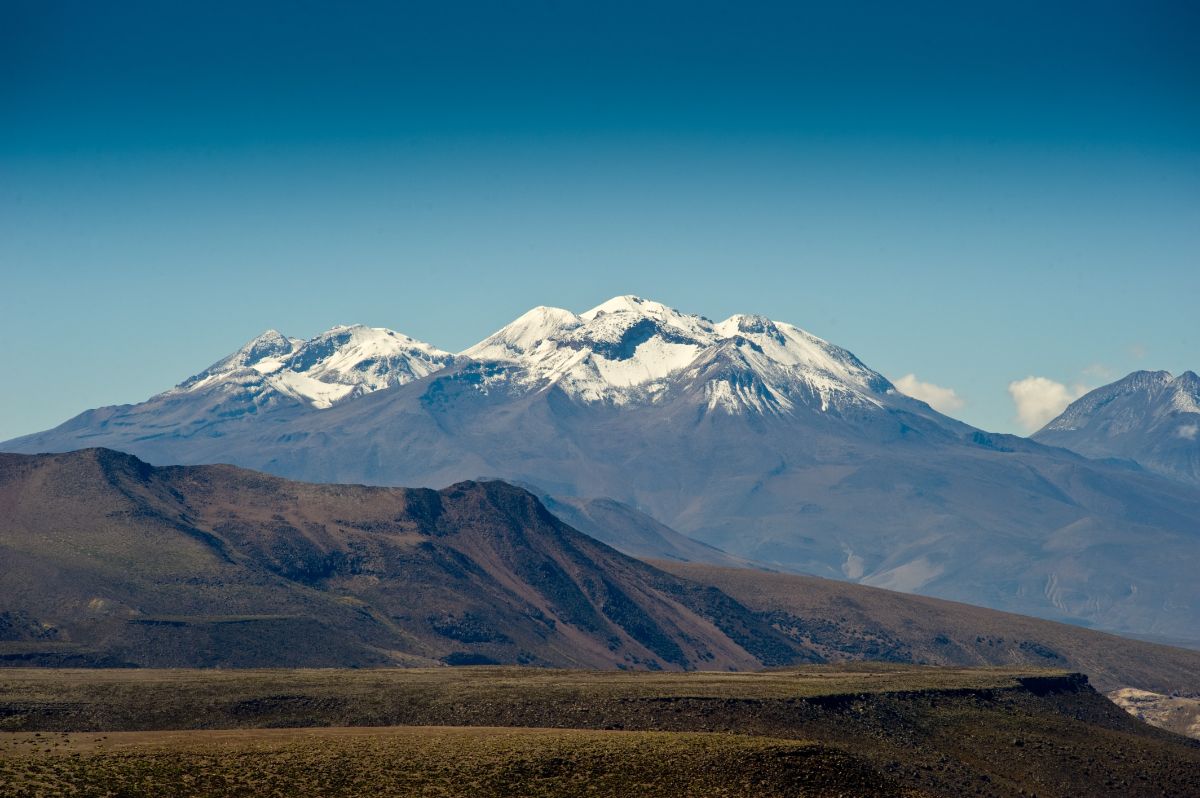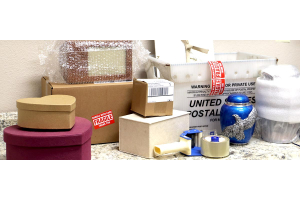
Mountains have long transfixed, tugged, tantalized, and terrified humankind. These lofty heights, so far removed from the day-to-day realm of most people, have often appeared as the haunts of the gods, portals between Earth and divine reaches. Depending on the culture and the individual, they’ve been places to seek out for spiritual stimulation, or ones to leave entirely alone as a rarefied and dangerous domain. Mountains have also managed to remain, in large part, refuges of wildness and wilderness. Their more pristine character translates to practical ecological services, including as critical fountainheads supplying vast numbers of lowlanders with freshwater.
Like countless others, I’ve always been drawn to the mountains: that sublimely beautiful high country that’s equal parts gorgeous and frightening. These elevated landscapes are awe-inspiring in the deepest sense, and I’ve fallen under their spell time and time again. After years of general-purpose mountaineering alongside hunting, backpacking, and competitive orienteering, I felt the need—now in my 40s—to take my alpine explorations to the next level. To pursue that impulse, I signed on to a 10-day expedition to climb the highest peaks in the Sierra Nevada—John Muir’s fabled “Range of Light”—with the American Alpine Institute (AAI).
The 400-mile-long Sierra chain not only includes the Lower 48’s highest peaks, but it also encompasses some of the most utterly gorgeous mountainscapes in the world. We’re talking granite domes and monoliths, the dark jags and horns of the Ritter Range, glorious mixed-conifer forests of tremendous stature, foaming whitewater and remote tarns. California’s culminating range is an exquisite natural mosaic, and without question one of the genuinely legendary climbing destinations in the world.
As we underwent intense preparation for our High Sierra exploits, I and my fellow clients, four of us in total, put much faith in our AAI guide: one Kent Swanson, Jr.
Only 25 years old at the time, Kent cut a memorable and charismatic figure: extremely athletic, full of life, and visibly fired up by other people. He had a genuine passion to see us succeed in our own life ambitions.
Originally from the Baltimore suburbs, Kent ended up studying biology at Lewis and Clark College in Portland. While earning his degree, he joined Portland Mountain Rescue, cutting his teeth as a climber and emergency responder on the slopes of Mount Hood, Mount Rainier, and other Cascadian giants.


Originally from the Baltimore suburbs, Kent ended up studying biology at Lewis and Clark College in Portland. While earning his degree, he joined Portland Mountain Rescue, cutting his teeth as a climber and emergency responder on the slopes of Mount Hood, Mount Rainier, and other Cascadian giants.
The then-head of Portland Mountain Rescue, Rocky Henderson, recalled to the Baltimore Sun Kent’s impressive skills as he participated in a daring rescue of three climbers stranded in bad weather on Mount Hood’s treacherous shoulders. “We prayed that they got there,” Henderson told the paper. “It was only because of [Kent’s] intimate knowledge of the mountain that he was able to locate them. They must have appeared as guardian angels to those climbers, who were already suffering from hypothermia, when he and his partner got there. They saved three lives that night.”


Kent ended up moving southward and joining the Mammoth Mountain Ski Patrol in California, where he came to the aid of thousands of folks in dire straits (and often in similarly demanding conditions). He spent the summers working with the AAI and ultimately became a guide with that venerable organization. During this period, he composed a valuable climbing guide and instruction manual for the highest peak in the conterminous U.S.: 14,505-foot Mount Whitney. The spectacular roof of the so-called Muir Crest of the southern Sierra. At this point, this young mountaineer had already summited Andean peaks past 20,000 feet. Most definitely proving his “chops'' in those demanding, unpredictable, ethereal alpine environments.
This was the youthful but already well-credentialed guide who led us up some of the Sierra Nevada’s grandest peaks. I remember well that first morning of the expedition as we wrapped our orientation meetup and breakfast at Tom’s Place, Kent saying, “OK, boys, grab your gear, and let’s do this!”
An hour later we were loaded up and heading into the High Sierra a mere day after a voluminous May snowfall. The precipitous east flank of the Sierra—a staggering wall compared to the gentler west-side ramp—presents, coated in snow and ice as it was, a demanding test of winter-climbing. I was definitely exhilarated by that challenge right off the bat.
Heavy snowfall the night before certainly raised the alarm about High Sierra avalanches. We were reassured to discover that Kent Swanson, aside from his all-around skills and savvy on the High Sierra snowscapes, was—more so than many mountaineers—a real student of avalanches. His interest in these epic snow slides went beyond basic alpinist safety into an authentic passion: The nitty-gritty of avalanches, their triggers, run-outs, and basic mechanics, fascinated him on a scientific level. He spoke of his desire to continue advanced avalanche training and delve deeper into the when, how, and why of these frightening but defining phenomena of snow-cloaked mountains.
This conversation went down, incidentally, as rock and ice chunks clattered down the nearly vertical face of 13,000-foot Mount Morgan. Which brooded over our slog toward next day’s goal: the mighty 13,726-foot Bear Creek Spire.
Part of this unforgettable adventure included an ascent of the downright legendary east face of Mount Whitney, among the classic climbs in American mountaineering. Because of the prodigious snow and ice at hand and some very real safety concerns, we all agreed to tackle this crowning peak by the “Mountaineers Route.” Even though it’d be a snow-choked undertaking. Kent considered it a sensible choice, so long as we got going early.
The plan was to climb the col in the early morning hours and celebrate the ninth day of our high-country odyssey on the summit of the Lower 48’s uppermost peak. So long as the weather cooperated—and thankfully, it absolutely did—we’d then wrap our trip on a high and adventurous note with an ice-axe-enabled glissade down from Trail Crest to Trail Camp: a roughly 5,000-foot snow slide I’ve never forgotten.
The High Sierra landscapes were marvelous, no question. But my keenest memories of that 10-day experience centered on the young guide whom we came to trust with our lives.
Early that next year, I investigated the possibility of another AAI trip. This time into the ice-swaddled peaks of the Washington Cascades. I called up AAI and soon found out that our singular Sierra Nevada guide, Kent Swanson, Jr., had just recently passed away in a helicopter crash in the Purcell Mountains of British Columbia on this way to an avalanche training course.


The news staggered me—not least because I’d lost a son only two years before. My emotional response to learning of Kent’s loss was similar to that life-changing blow.
This was back in the very early days of the Internet, but it was by email in the summer of 1997 that I was invited to attend a scattering of Kent’s ashes. The site? The summit of 11,249-foot Mount Hood, Oregon’s highest peak and one of the fixtures of Kent’s personal geography. Only a few years before, Kent had patrolled those slopes, coming to the rescue of those in distress.
He’d also trekked to the crown of this gorgeous stratovolcano on a purely recreational basis: indulging in a summit meal, flying a kite (yes, a kite), and then skiing down past the “Pearly Gates” and over the Bergschrund to reach the historic Timberline Lodge.
That fetching CCC-built structure at the subalpine threshold of Mount Hood was the gathering place that summer for so many of Kent’s friends and family. So many of his various communities were represented, including folks from Lewis & Clark College, Portland Mountain Rescue, Mammoth Mountain Ski Patrol, California Friends, and the AAI. His parents, Kent Sr. and Tricia Swanson, were also in attendance. We met and talked through the night, celebrating this amazing individual.


Early that next morning, well before sunup (abiding by a typical mountaineer schedule), we all found our various ways up the mountain: walking, snowshoeing and riding Snowcats. Those who’d made the journey were spread out from Timberline Lodge up to the well-known “Hogsback” ridge mounting from Crater Rock. Yet, everybody seemed to converge at the right place and the right time.
Some planned to climb all the way to the top and others, understandably, weren’t able to do so. It was decided that some of Kent’s ashes would be scattered at the Hogback, a convenient place for all to assemble. Here, up at this striking rampart, Kent Sr. had a private moment with his son. Then, made the first cast of the cremains. His wife Trich did the same. A few words were said, and then the balance of Kent’s ashes in his cremation urn were transported higher up to the pinnacle of Mount Hood.
I remember one of the Portland Mountain Rescue guys asking if anyone felt the need to rope up for safety, given the rather icy ascent. I thought to myself: “I’ll do it as soon as somebody else does.” But everybody shrugged it off and headed uphill. I decided to follow a confidence-exuding young lady who struck an impressive pace. Some two-thirds of the way up, I remember noting that she wasn’t stopping to catch her breath. In fact, she didn’t stop once all the way up to Hood’s summit. I found out on the top that she was training for a marathon, one she planned to run in memory of Kent.
We gathered at the summit as the sun rose into a sky barely sullied by clouds. A remarkable lineup of other Cascade peaks anchored the viewshed. There was massive Mount Rainier, apex of the entire Cascade Range and another of Kent’s truly beloved climbing grounds. Burly Mount Adams and leveled-off Mount St. Helens—that most volatile of Cascadian fire mountains—loomed nearer to hand. The sharp fang of Mount Jefferson dominated the southern horizon, also rumpled with Olallie Butte, Three-Fingered Jack, and other far-off eminences. The panorama, needless to say, was spectacular.
It didn’t take long before the first kites started to fly alongside stories about Kent. This proved the natural, lovely prelude to a mountaintop scattering of his ashes, with multiple congregants taking part: some joyfully, some with tears in their eyes. What a privilege to be a part of this funereal climb.








How to perform a National Park Scattering?
Just as Kent’s family opted for scattering his ashes at a place where he felt comfortable and at home, many others wish to do the same with their loved ones. Scattering has become a popular practice nowadays and National Parks scattering is on top of the list. Before performing the scattering there are a few things to keep in mind.
- Wildlife: there is the Environmental Protection Agency (EPA). Scattering ashes, particularly in water, has the potential to affect the wildlife there. Burying ashes in a lake or ocean raises concerns for the EPA as well.
- Out of State: There are state and local laws that might trip up visitors coming from out of state to scatter a loved one’s ashes. Scattering ashes on land at a national park is often easier since people can be reasonably certain that the park is the only government entity they must deal with.
- Guidelines and Laws: In some national parks, scattering ashes is sufficiently popular that the individual parks have developed their own guidelines and paperwork for visitors who wish to scatter ashes. These parks include:
- Yosemite
- Sequoia & Kings Canyon
- Grand Canyon (no longer permitted)
- Yellowstone
- Great Smoky Mountains
Most parks do not have laws against scattering cremated remains within certain conditions. Many recognize that this is an important activity for people going through the grieving process. As such, they make it fairly simple for visitors to get permission to scatter ashes in those parks.
- Picking a Place: Those who wish to scatter ashes need to pick a place in the park ahead of time. They should confirm that the ashes have been properly pulverized, with no significant pieces of tooth or bone. The location people choose should be away from heavy-use areas.
- What is Permitted: scattering ashes over water, or burying them, is generally prohibited. Pilots scattering ashes by plane must follow Federal Aviation Administration routes, and reach minimum heights set by the individual parks. For those who scatter ashes on the ground, they should take care to distribute the ashes fully in a place that is at least 100 feet from parking lots, campgrounds and bodies of water. They may not leave piles of ashes in any place.
Each national park has the ability to set its own requirements for people who wish to scatter ashes, respecting the rules of other organizations that manage the land encompassed by the park.
Urns for National Park Scattering
Since most parks have rules about burying items in the park, it is not necessary to choose an urn that is biodegradable and is not particularly difficult. As such, people have a wide variety of choices for scattering urns. Some allow engraving of the urn or memorial plates so that loved ones can keep the urn (and perhaps part of the cremated remains) as a keepsake. Others are enigmatic and demonstrate a part of the deceased’s personality. Customization allows families to select the scattering urn that will suit their needs perfectly.
It was a perfectly fitting place to honor the life of a climber and guide so infatuated and in tune with the high country. Kent Swanson, Jr. lives on in the hearts of all who knew him; I’ll certainly never forget his sturdy guidance and contagious enthusiasm up in the soaring cathedral of the High Sierra.
Sir Edmund Hillary—the New Zealand alpinist who, with Tenzing Norgay, first summited the highest mountain on Earth, Mount Everest—once said, “It’s not the mountain we conquer but ourselves.” Though it’s been nearly 20 years since Kent passed on, I still marvel at the life lessons he imparted to us as a 25-year-old. Helping us conquer our own doubts and fears—our own psychic and emotional mountains, you might say—up there in the Range of Light. That’s part of his legacy. I cherish the memory not only of his rock-solid guiding on Mount Whitney, but the scattering of his ashes on Hood. That glacier-carved fire mountain rears up into the skyscape as a memorial to one very special, roof-of-the-world-wandering man.





